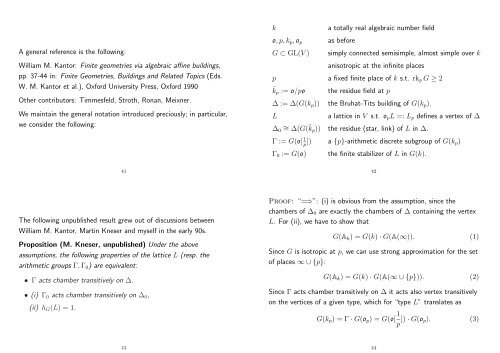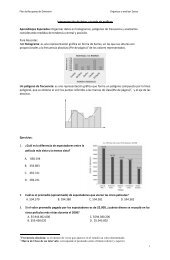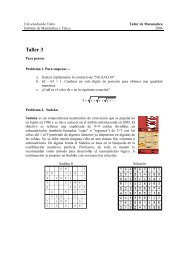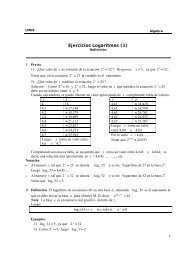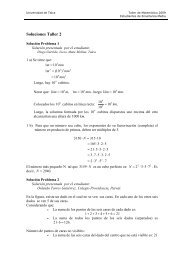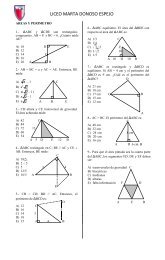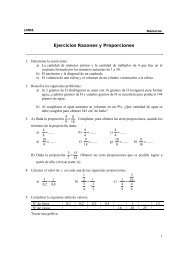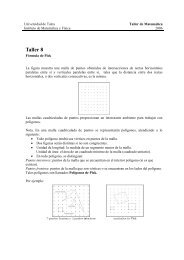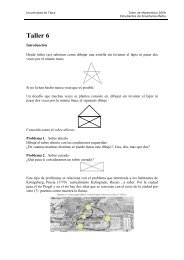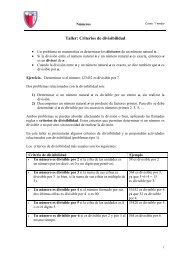2.4 Further c<strong>on</strong>tributi<strong>on</strong>s by M. KneserTo finish this partial overview of Kneser’s <str<strong>on</strong>g>work</str<strong>on</strong>g>, I want to menti<strong>on</strong>three doctoral dissertati<strong>on</strong>s which were supervised by him. This is mypers<strong>on</strong>al choice.H.-V. Niemeier, Definite quadratische Formen der Diskriminante 1und Dimensi<strong>on</strong> 24, J. Number Theory 5 (1973), 142–178.Jürgen Biermann: Gitter mit kleiner Automorphismengruppe inGeschlechtern v<strong>on</strong> Z-Gittern mit positiv-definiter quadratischer Form,Dissertati<strong>on</strong> Göttingen 1981Yuriko Suwa-Bier Positiv definite quadratische Formen mit gleichenDarstellungsanzahlen, Dissertati<strong>on</strong> Göttingen 1984In c<strong>on</strong>strast to a first impressi<strong>on</strong>, this is not a questi<strong>on</strong> about thetaseries. It requires a carefully chosen (<strong>and</strong> eventually computer-based)decompositi<strong>on</strong> of the 12-dimensi<strong>on</strong>al c<strong>on</strong>e of pairs of reduced positivedefinite 3 × 3-matrices.The soluti<strong>on</strong> of this problem was eventually given in the followingdissertati<strong>on</strong>, supervised by F. Grunewald:Alex<strong>and</strong>er Schiemann: Ternäre positiv definite quadratische Formenmit gleichen Darstellungsanzahlen, Dissertati<strong>on</strong> B<strong>on</strong>n 19933738Finally, I want to menti<strong>on</strong> three papers by Kneser himself, which dealwith <strong>quadratic</strong> <strong>forms</strong>, but outside the main scope of his <str<strong>on</strong>g>work</str<strong>on</strong>g>s.Zur Theorie der Kristallgitter,Math. Annalen 127, 105–106 (1954)Two remarks <strong>on</strong> extreme <strong>forms</strong>, Canadian Journal of Math.7, 145–149 (1955)Lineare Relati<strong>on</strong>en zwischen Darstellungsanzahlen quadratischerFormen, Math. Annalen 168, 31–39 (1967)3 A particular problem: finite quotients ofBruhat-Tits buildingsIn the 1980s: Finite group theorists <strong>and</strong> geometers <str<strong>on</strong>g>work</str<strong>on</strong>g> <strong>on</strong> the classificati<strong>on</strong> ofcertain classes of (locally) finite incidence geometries bel<strong>on</strong>ging to a Coxeterdiagram (<strong>and</strong> more general diagrams), together with a flag transitiveautomorphism group. The maximal flags are called “chambers”, the term“chamber system” is also comm<strong>on</strong>. These geometries locally look like finitebuildings.There is an appropriate covering theory for chamber systems (related to groupamalgamati<strong>on</strong>s), <strong>and</strong> the universal 2-cover under rather general assumpti<strong>on</strong>s is abuilding. If the diagram bel<strong>on</strong>gs to the known list of affineCoxeter-Dynkin-diagrams <strong>and</strong> the rank is ≥ 4, then this building is known: it as aBruhat-Tits building.3940
A general reference is the following:ko,p,k p ,o pG ⊂ GL(V )a totally real <strong>algebraic</strong> number fieldas beforesimply c<strong>on</strong>nected semisimple, almost simple over kWilliam M. Kantor: Finite geometries via <strong>algebraic</strong> affine buildings,pp. 37-44 in: Finite Geometries, Buildings <strong>and</strong> Related Topics (Eds.W. M. Kantor et al.), Oxford University Press, Oxford 1990Other c<strong>on</strong>tributors: Timmesfeld, Stroth, R<strong>on</strong>an, Meixner.We maintain the general notati<strong>on</strong> introduced preciously; in particular,we c<strong>on</strong>sider the following:anisotropic at the infinite placesp a fixed finite place of k s.t. rk p G ≥ 2¯k p := o/po the residue field at p∆ := ∆(G(k p )) the Bruhat-Tits building of G(k p ).La lattice in V s.t. o p L =: L p defines a vertex of ∆∆ 0∼ = ∆(G(¯kp )) the residue (star, link) of L in ∆.Γ := G(o[ 1 p ]) a {p}-arithmetic discrete subgroup of G(k p)Γ 0 := G(o)the finite stabilizer of L in G(k).4142The following unpublished result grew out of discussi<strong>on</strong>s betweenWilliam M. Kantor, <str<strong>on</strong>g>Martin</str<strong>on</strong>g> Kneser <strong>and</strong> myself in the early 90s.Propositi<strong>on</strong> (M. Kneser, unpublished) Under the aboveassumpti<strong>on</strong>s, the following properties of the lattice L (resp. thearithmetic <strong>groups</strong> Γ, Γ 0 ) are equivalent:• Γ acts chamber transitively <strong>on</strong> ∆.• (i) Γ 0 acts chamber transitively <strong>on</strong> ∆ 0 ,(ii) h G (L) = 1.Proof: “=⇒”: (i) is obvious from the assumpti<strong>on</strong>, since thechambers of ∆ 0 are exactly the chambers of ∆ c<strong>on</strong>taining the vertexL. For (ii), we have to show thatG(A k ) = G(k) · G(A(∞)). (1)Since G is isotropic at p, we can use str<strong>on</strong>g approximati<strong>on</strong> for the setof places ∞ ∪ {p}:G(A k ) = G(k) · G(A(∞ ∪ {p})). (2)Since Γ acts chamber transitively <strong>on</strong> ∆ it acts also vertex transitively<strong>on</strong> the vertices of a given type, which for “type L” translates asG(k p ) = Γ · G(o p ) = G(o[ 1 p ]) · G(o p). (3)4344


